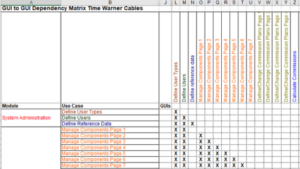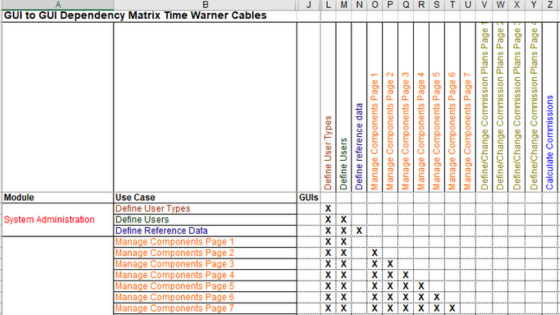Table of Contents
Dependency Matrix: Understanding the Basics
In the field of computer science, the term “dependency matrix” refers to a data structure used to represent the dependencies between various components of a system. A dependency matrix can be used to represent any kind of dependency, whether it be between classes, functions, or even modules. In this article, we will explore the basics of dependency matrices, their importance in software development, and how they can be used to improve the quality and maintainability of software systems.

What is a Dependency Matrix?
A dependency matrix is a square matrix that represents the dependencies between different components of a system. The rows and columns of the matrix represent the components, and the entries in the matrix represent the dependencies between them. Specifically, an entry (i, j) in the matrix is 1 if component I depends on component j and 0 otherwise.
For example, suppose we have a software system with four components: A, B, C, and D. If component A depends on component B and component C, but not on component D, we can represent this using the following dependency matrix:
|
A |
B |
C |
D |
|
|
A |
0 |
1 |
1 |
0 |
|
B |
0 |
0 |
0 |
0 |
|
C |
0 |
0 |
0 |
0 |
|
D |
0 |
0 |
0 |
0 |
In this matrix, entry (1,2) is 1 because component A depends on component B, and entry (1,3) is 1 because component A depends on component C. The other entries are 0 because there are no other dependencies.
Why are Dependency Matrices Important?
Dependency matrices are important because they help software developers to understand the relationships between different components of a system. By analyzing a dependency matrix, a developer can identify the components that are most important to the system and the components that are most likely to cause problems if they are changed.
For example, suppose we are working on a software system with a large number of components, and we want to make a change to one of the components. If we have a dependency matrix for the system, we can use it to identify which other components depend on the one we want to change. This allows us to understand the impact of our change and to make sure that it does not break any other parts of the system.
How to Use Dependency Matrices
There are several ways that developers can use dependency matrices to improve the quality and maintainability of software systems. Some of these include:
- Identifying circular dependencies: A circular dependency occurs when two or more components depend on each other in a loop. Circular dependencies can be difficult to manage and can make it hard to change the system without causing problems. By analyzing a dependency matrix, developers can identify circular dependencies and work to eliminate them.
- Identifying high-risk components: Some components are more important to the system than others. For example, if a component is used by many other components, changing it is more likely to have a ripple effect throughout the system. By analyzing a dependency matrix, developers can identify the components that are most important and focus their testing and debugging efforts on those components.
- Identifying redundant components: Sometimes, two or more components perform similar functions and are not both needed in the system. By analyzing a dependency matrix, developers can identify redundant components and remove them, simplifying the system and reducing the risk of errors.
Conclusion
In conclusion, a dependency matrix is a powerful tool that can help software developers to understand the relationships between different components of a system. By analyzing a dependency matrix, developers can identify circular dependencies, high-risk components, and redundant.

